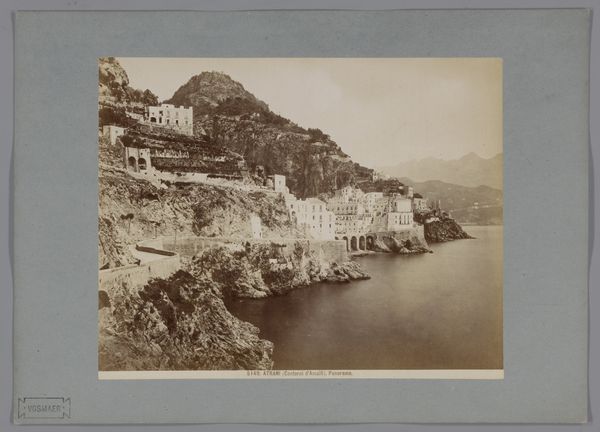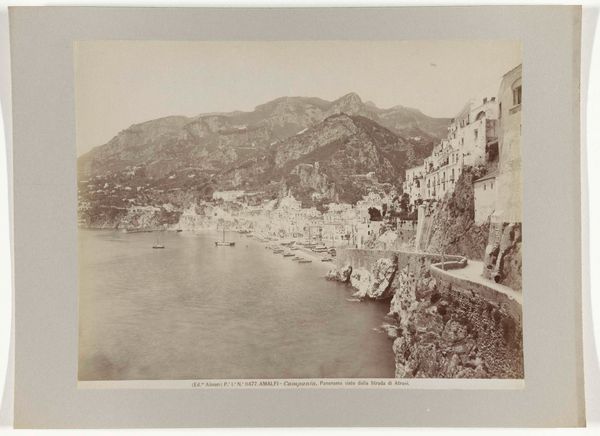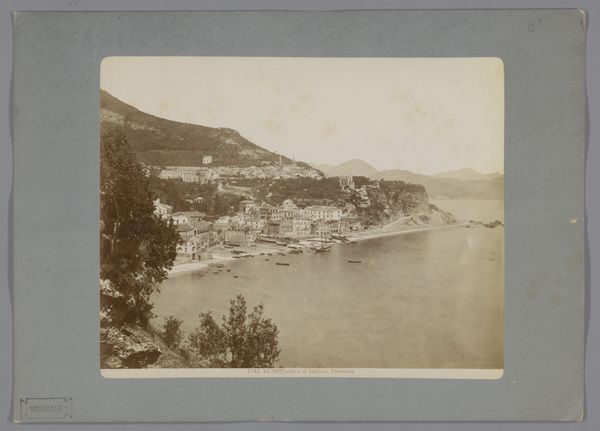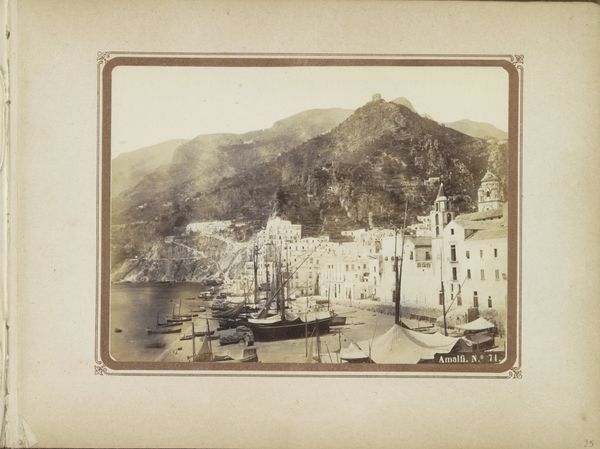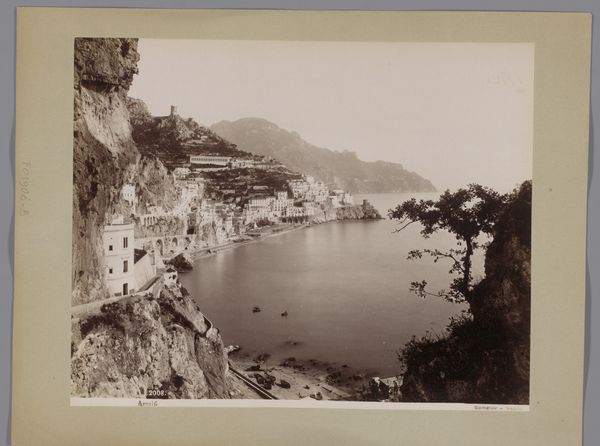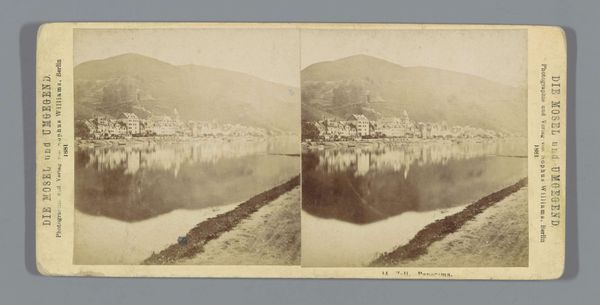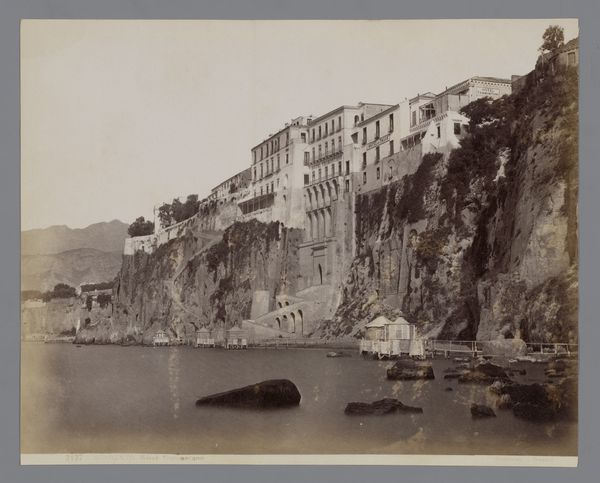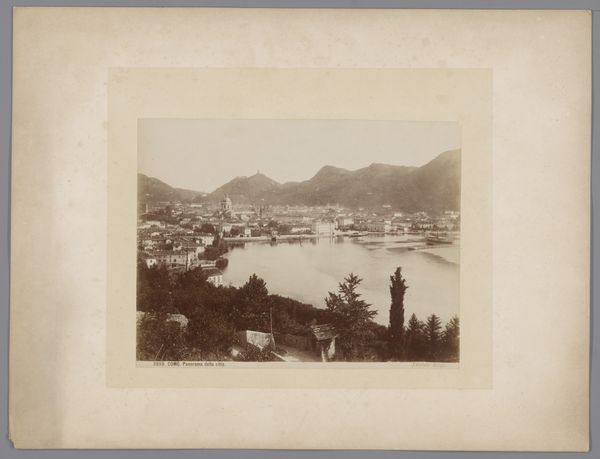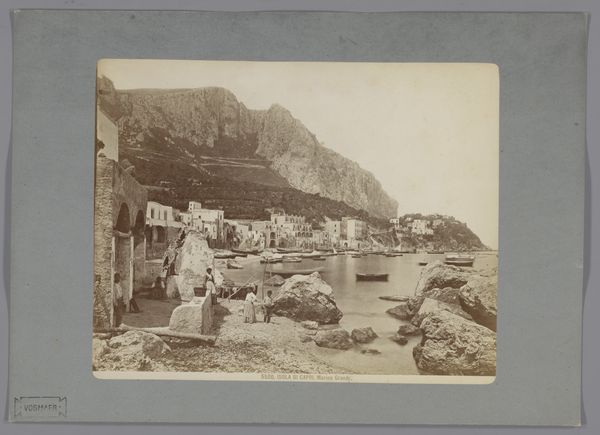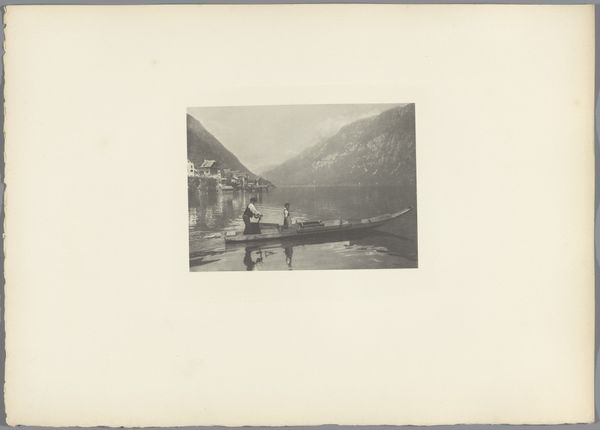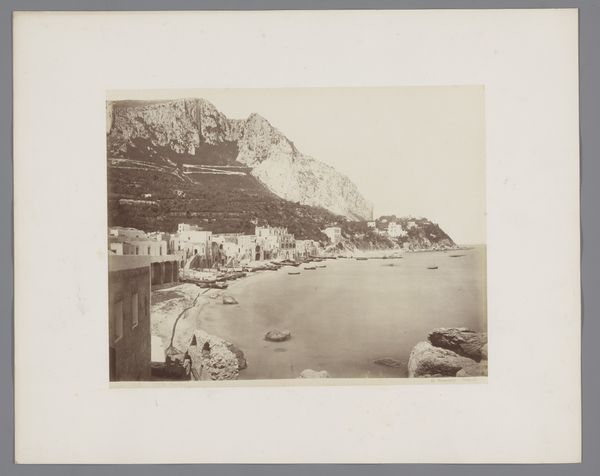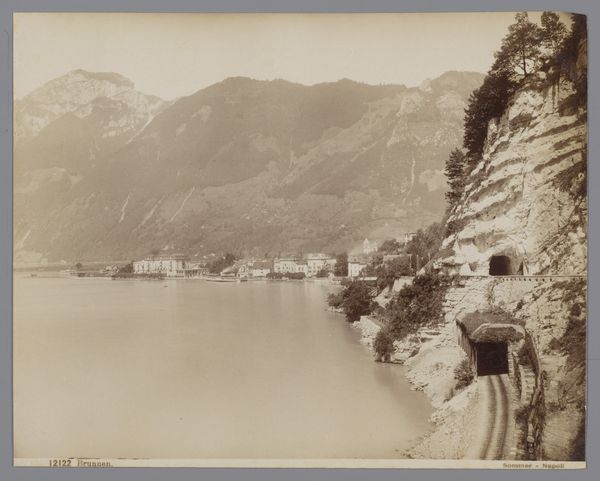
print, plein-air, photography, gelatin-silver-print
# print
#
plein-air
#
landscape
#
photography
#
gelatin-silver-print
#
cityscape
#
italian-renaissance
#
watercolor
#
realism
Dimensions: height 202 mm, width 250 mm, height 258 mm, width 358 mm
Copyright: Rijks Museum: Open Domain
Editor: So, this is Giacomo Brogi's "View of Amalfi, the Capuchin Monastery, and the Gulf of Salerno," taken between 1864 and 1881, a gelatin silver print. It's incredibly picturesque, almost romantic. The town clinging to the cliffs is just stunning. What strikes you most about it? Curator: I see more than just a pretty picture. Consider the power dynamics at play here. Photography in the 19th century was largely a tool of documentation and control. Who was being photographed, and by whom? And to what end? Editor: I hadn't really thought about that aspect. You mean, how images of places like Amalfi might have been used? Curator: Exactly. Think about the rise of tourism and colonialism at the time. Images like this romanticize the area. While we see a picturesque town, we need to acknowledge who profits from its image and potentially, who is exploited in the process. Is it celebrating the everyday lives of the Amalfi citizens or marketing their home? Where does art serve capital? Editor: So, this image could be complicit in a bigger system, rather than just being a neutral representation? Curator: Precisely. Consider who had access to photography then. The elite. This image may have been circulated to fuel colonial desires to visit Amalfi without consideration of Amalfi residents. This then contributes to an imbalance of power. Are you beginning to consider the problematic gaze in what seems a harmless photograph? Editor: I think so. I'm seeing this photograph in a different light now, and understanding how to examine photography within a social context. Thank you. Curator: Likewise. Looking at art through that lens—that is where the real work begins.
Comments
No comments
Be the first to comment and join the conversation on the ultimate creative platform.
